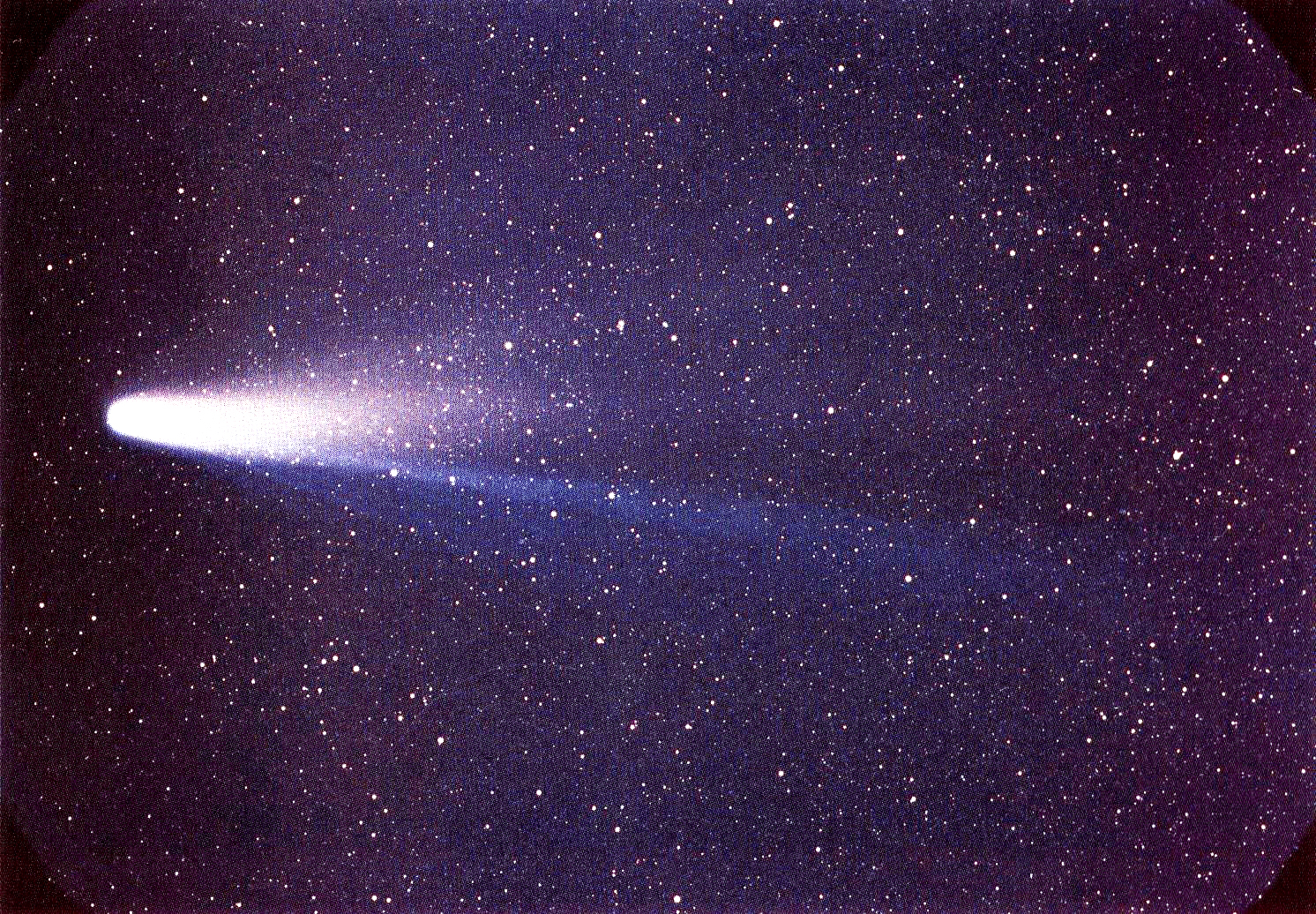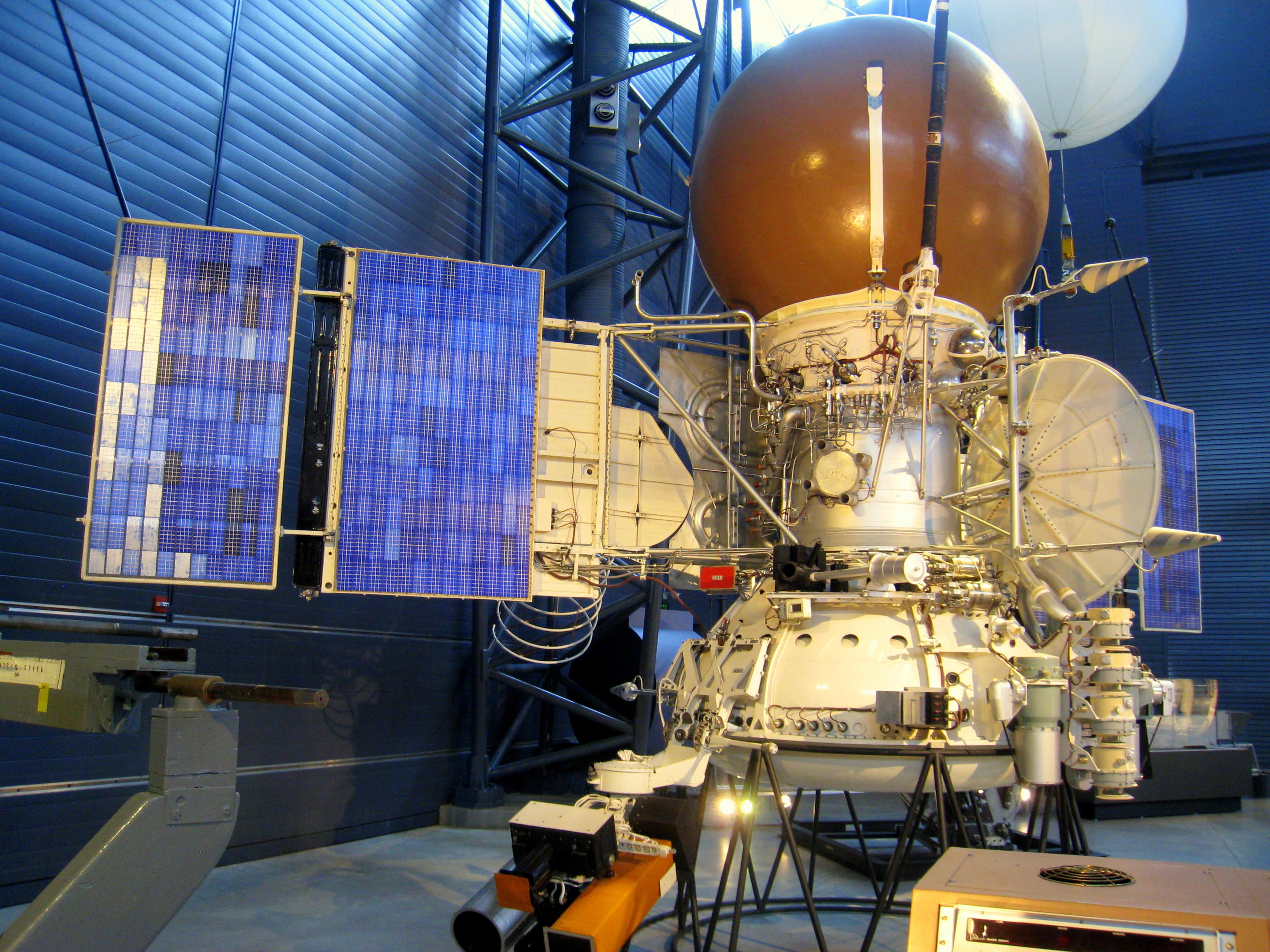Halley Armada on:
[Wikipedia]
[Google]
[Amazon]
 The Halley Armada is the name of a series of space probes, five of which were successful, sent to examine
The Halley Armada is the name of a series of space probes, five of which were successful, sent to examine
 Probes involved (in order of closest approach):
*
Probes involved (in order of closest approach):
*
Image of Halley in 1986 by Giotto spacecraft
(ESA Giotto. Archive.org, 27 Sep 2011) {{Planetary defense Soviet space probes European Space Agency space probes NASA space probes Japanese space probes
 The Halley Armada is the name of a series of space probes, five of which were successful, sent to examine
The Halley Armada is the name of a series of space probes, five of which were successful, sent to examine Halley's Comet
Halley's Comet or Comet Halley, officially designated 1P/Halley, is a short-period comet visible from Earth every 75–79 years. Halley is the only known short-period comet that is regularly visible to the naked eye from Earth, and thus the o ...
during its 1986 sojourn through the inner Solar System, connected with apparition "1P/1982 U1". The armada included one probe from the European Space Agency
, owners =
, headquarters = Paris, Île-de-France, France
, coordinates =
, spaceport = Guiana Space Centre
, seal = File:ESA emblem seal.png
, seal_size = 130px
, image = Views in the Main Control Room (1205 ...
, two probes that were joint projects between the Soviet Union
The Soviet Union,. officially the Union of Soviet Socialist Republics. (USSR),. was a transcontinental country that spanned much of Eurasia from 1922 to 1991. A flagship communist state, it was nominally a federal union of fifteen national ...
and France
France (), officially the French Republic ( ), is a country primarily located in Western Europe. It also comprises of Overseas France, overseas regions and territories in the Americas and the Atlantic Ocean, Atlantic, Pacific Ocean, Pac ...
and two probes from the Institute of Space and Astronautical Science
(ISAS) is a Japanese national research organization of astrophysics using rockets, astronomical satellites and interplanetary probes which played a major role in Japan's space development. Since 2003, it is a division of Japan Aerospace E ...
in Japan
Japan ( ja, 日本, or , and formally , ''Nihonkoku'') is an island country in East Asia. It is situated in the northwest Pacific Ocean, and is bordered on the west by the Sea of Japan, while extending from the Sea of Okhotsk in the north ...
. Notably, NASA
The National Aeronautics and Space Administration (NASA ) is an independent agency of the US federal government responsible for the civil space program, aeronautics research, and space research.
NASA was established in 1958, succeeding t ...
did not contribute a probe to the Halley Armada.
Main space probes
Giotto
Giotto di Bondone (; – January 8, 1337), known mononymously as Giotto ( , ) and Latinised as Giottus, was an Italian painter and architect from Florence during the Late Middle Ages. He worked during the Gothic/Proto-Renaissance period. Giot ...
(596 km), the first space probe to get close-up color images of the nucleus of a comet. (ESA)
*Vega 2
Vega 2 (along with Vega 1) was a Soviet space probe part of the Vega program to explore Halley's comet and Venus. The spacecraft was a development of the earlier ''Venera'' craft. The name VeGa (ВеГа) combines the first two letters Russian wo ...
(8,030 km), which dropped a balloon probe and lander on Venus
Venus is the second planet from the Sun. It is sometimes called Earth's "sister" or "twin" planet as it is almost as large and has a similar composition. As an interior planet to Earth, Venus (like Mercury) appears in Earth's sky never fa ...
before going on to Halley. (USSR/France Intercosmos
Interkosmos (russian: Интеркосмос) was a Soviet space program, designed to help the Soviet Union's allies with crewed and uncrewed space missions.
The program was formed in April 1967 in Moscow. All members of the program from USSR ...
)
*Vega 1
Vega 1 (along with its twin Vega 2) was a Soviet space probe, part of the Vega program. The spacecraft was a development of the earlier '' Venera'' craft. They were designed by Babakin Space Centre and constructed as 5VK by Lavochkin at Khim ...
(8,889 km), which dropped a balloon probe and lander on Venus before going on to Halley. (USSR/France Intercosmos)
*Suisei Suisei is Japanese for "comet" and the Japanese name for the planet Mercury. It may also stand for:
*Hoshimachi Suisei, Japanese virtual YouTuber
* Suisei (probe)
, originally known as Planet-A, was an unmanned space probe developed by the Ins ...
(151,000 km), also known as PLANET-A. Data from Sakigake was used to improve upon Suisei for its dedicated mission to study Halley. (ISAS)
*Sakigake
, known before launch as MS-T5, was Japan's first interplanetary spacecraft, and the first deep space probe to be launched by any country other than the USA or the Soviet Union. It aimed to demonstrate the performance of the new launch vehic ...
(6.99 million km), Japan's first probe to leave the Earth system, mainly a test of interplanetary mission technology. (ISAS)
Without the measurements from the other space probes, Giotto's closest distance would have been 4,000 km instead of the 596 km achieved.
Other missions
Other space probes had their instruments examining Halley's Comet: * Pioneer 7 was launched on August 17, 1966. It was put into heliocentric orbit with a mean distance of 1.1 AU to study the solar magnetic field, the solar wind, and cosmic rays at widely separated points in solar orbit. On 20 March 1986, the spacecraft flew within 12.3 million kilometers of Halley's Comet and monitored the interaction between the cometary hydrogen tail and the solar wind. *Pioneer Venus Orbiter
The Pioneer Venus Orbiter, also known as Pioneer Venus 1 or Pioneer 12, was a mission to Venus conducted by the United States as part of the Pioneer Venus project. Launched in May 1978 atop an Atlas-Centaur rocket, the spacecraft was inserted into ...
in orbit of Venus, was positioned perfectly to take measurements of Halley's Comet during its perihelion
An apsis (; ) is the farthest or nearest point in the orbit of a planetary body about its primary body. For example, the apsides of the Earth are called the aphelion and perihelion.
General description
There are two apsides in any ellip ...
February 9, 1986. Its UV-spectrometer observed the water loss when Halley's Comet was difficult to observe from the Earth.
*International Cometary Explorer
The International Cometary Explorer (ICE) spacecraft (designed and launched as the International Sun-Earth Explorer-3 (ISEE-3) satellite), was launched 12 August 1978, into a heliocentric orbit. It was one of three spacecraft, along with the mo ...
, which was repurposed as a cometary probe in 1982 and visited Comet Giacobini-Zinner in 1985, transited between the Sun and Halley's Comet in late March 1986 and took measurements.
Failed and cancelled missions
The Space Shuttle ''Challenger'', on its launch on January 28th, 1986, was carrying SPARTAN-203 with the mission to make observations of Halley's Comet.STS-51L
STS-51-L was the 25th mission of the NASA Space Shuttle program and the final flight of Space Shuttle ''Challenger''.
Planned as the first Teacher in Space Project flight in addition to observing Halley's Comet for six days and performing a ...
failed to reach orbit, resulting in the total loss of crew and vehicle. That launch failure resulted in the cancellation of dozens of subsequent shuttle missions, including the next scheduled launch, STS-61-E, planned for March 6, 1986, with a payload including the ASTRO-1 observatory, which was intended to make astronomical observations of Halley's Comet.
Presumed observations from space
*Any observations of Halley's Comet made by the crew ofSoyuz T-15
Soyuz T-15 (russian: Союз T-15, ''Union T-15'') was a crewed mission to the Mir and Salyut 7 space stations and was part of the Soyuz programme. It marked the final flight of the Soyuz-T spacecraft, the third generation Soyuz spacecraft, whi ...
, which made the first trip to the Mir
''Mir'' (russian: Мир, ; ) was a space station that operated in low Earth orbit from 1986 to 2001, operated by the Soviet Union and later by Russia. ''Mir'' was the first modular space station and was assembled in orbit from 1986 to&n ...
space station
A space station is a spacecraft capable of supporting a human crew in orbit for an extended period of time, and is therefore a type of space habitat. It lacks major propulsion or landing systems. An orbital station or an orbital space station i ...
and the last to Salyut 7
Salyut 7 (russian: Салют-7; en, Salute 7) (a.k.a. DOS-6, short for Durable Orbital Station) was a space station in low Earth orbit from April 1982 to February 1991. It was first crewed in May 1982 with two crew via Soyuz T-5, and last vi ...
in March 1986, are unknown.
References
External links
Image of Halley in 1986 by Giotto spacecraft
(ESA Giotto. Archive.org, 27 Sep 2011) {{Planetary defense Soviet space probes European Space Agency space probes NASA space probes Japanese space probes